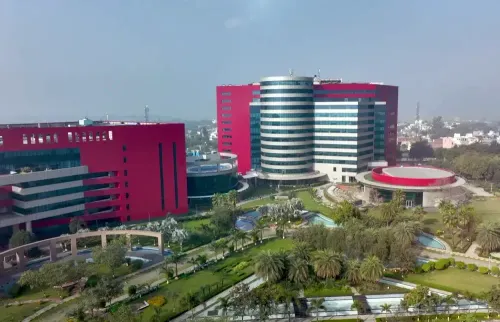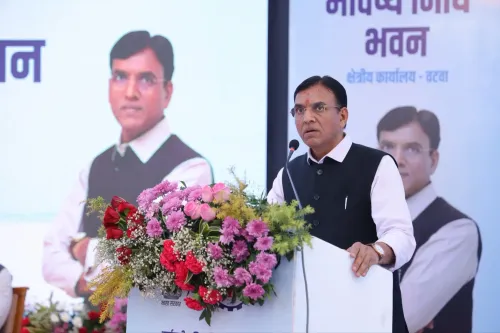Will Morgan Stanley Predict Another Rate Cut in October Due to India's Cooling Inflation?

Synopsis
Key Takeaways
- RBI expected to cut rates by 25 bps in October.
- Inflation has dropped significantly, averaging 3.2% in H1 CY25.
- Food prices have entered a deflationary phase.
- Government policies are helping to stabilize prices.
- Economic growth trends will influence future rate decisions.
New Delhi, July 18 (NationPress) - The global brokerage firm Morgan Stanley anticipates that the Reserve Bank of India (RBI) may implement one more rate reduction of 25 basis points (bps) during its policy meeting in October, as inflation rates continue to decline significantly.
While the firm predicts that the central bank will maintain rates in its upcoming meeting in August, it also highlighted the increasing likelihood of a rate cut in August due to a sharper-than-expected decline in inflation.
In its recent research analysis, Morgan Stanley reported that the consumer price index (CPI) inflation has consistently remained below 4 percent since February of this year.
For the first half of the calendar year 2025 (H1 CY25), inflation averaged just 3.2 percent, in contrast to 5 percent during the same timeframe last year.
In June, CPI inflation plummeted to 2.1 percent year-on-year (YoY), marking the lowest figure since February 2019. Wholesale prices have also entered a mild deflation phase.
The decline in inflation, coupled with mixed signals from economic growth data, has reignited discussions regarding the potential easing of monetary policy.
While Morgan Stanley anticipates a pause in the August meeting, it suggests that the RBI may opt to wait for additional growth trend data prior to making further moves.
The report indicates that although short-term inflation has notably decreased, the inflation outlook for the following year remains stable, which could lead the central bank to postpone another rate cut until October.
The analysis emphasizes that food inflation, a significant factor in overall price increases, has now transitioned into a deflationary phase.
Food prices saw a decline of 1.1 percent in June, marking the first contraction since February 2019. This is primarily attributed to a high base from the previous year, robust crop yields, and improved weather conditions.
For instance, cereal prices rose by only 3.7 percent in June, compared to an 8.8 percent increase a year prior, while vegetable prices fell by 19 percent compared to a steep 29.3 percent rise in June of last year.
Favorable rainfall this season is also expected to support a productive harvest. As of July 17, cumulative rainfall reached 109 percent of the long-term average, and sowing activities are on the rise.
The area dedicated to sowing all crops has increased by 6.6 percent, with rice—a crucial staple—seeing a 10.6 percent rise compared to last year.
On the policy front, the government has contributed to reducing food prices by implementing stock limits on essential items such as wheat and pulses, selling wheat in the open market, and providing subsidized vegetables and pulses through the Bharat brand, as highlighted in the report.










